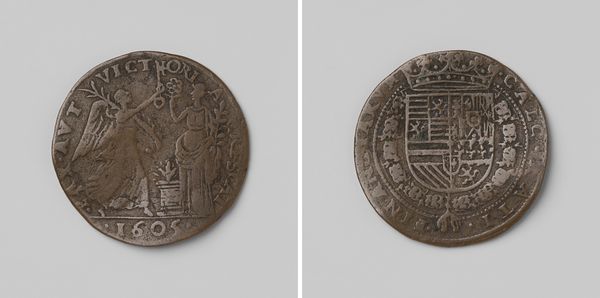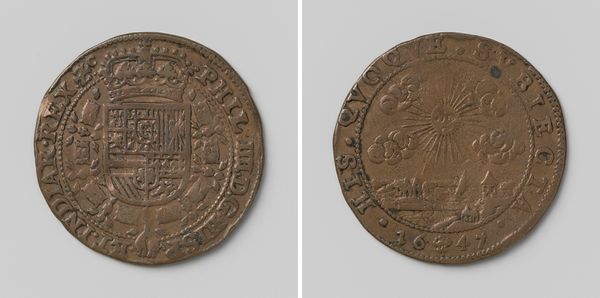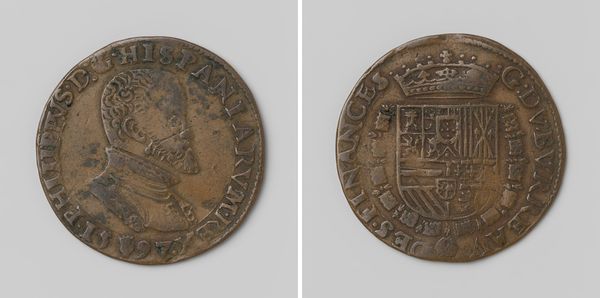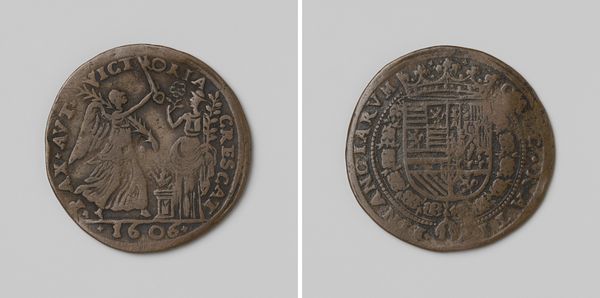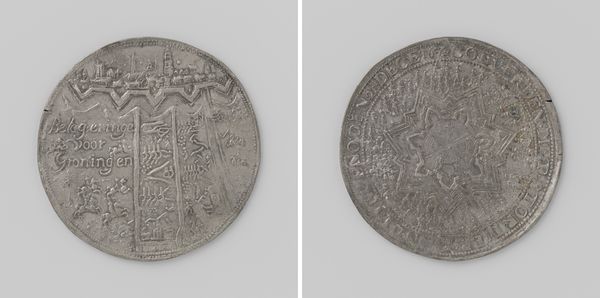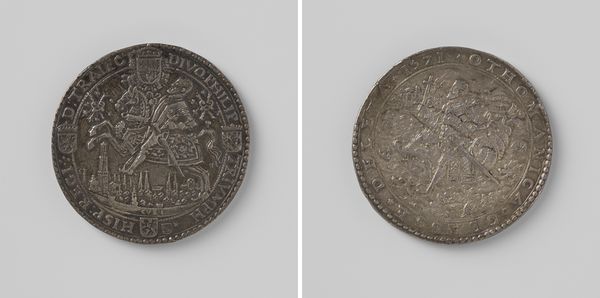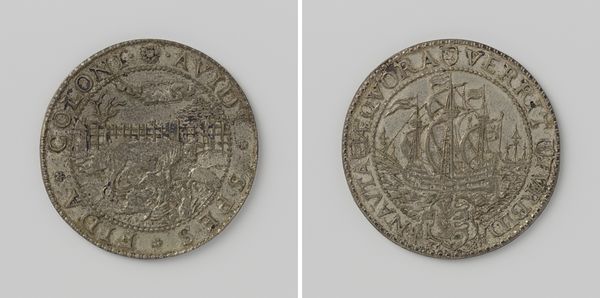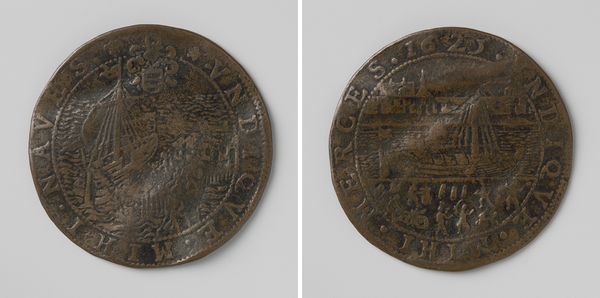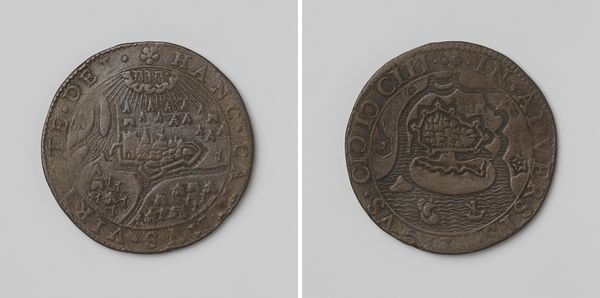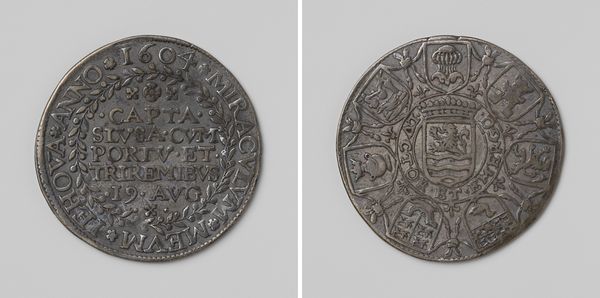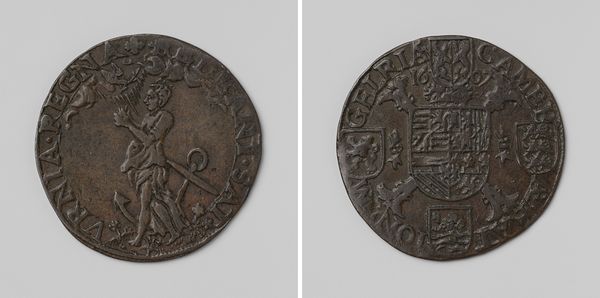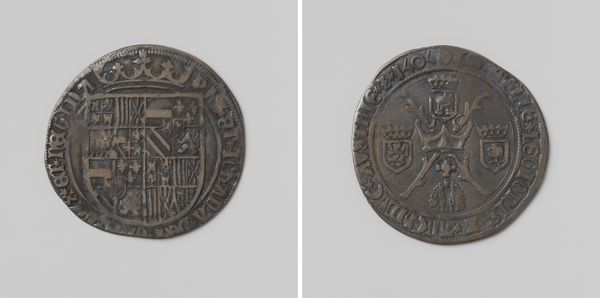
metal, relief, engraving
#
portrait
#
medieval
#
metal
#
relief
#
11_renaissance
#
engraving
Dimensions: diameter 3 cm, weight 67 gr
Copyright: Rijks Museum: Open Domain
Editor: This is "Filips II, koning van Spanje, graaf van Henegouwen," made in 1587 by an anonymous artist. It's a metal relief, like a coin or medallion. I’m struck by how worn it looks, almost like a relic. What historical narratives do you think this object holds? Curator: Given its date, 1587, and its subject, Philip II, it immediately speaks to the Dutch Revolt. This wasn't simply a religious or economic squabble. How might this object, designed to circulate, be considered an act of propaganda, shaping public perception and solidifying the king’s power amidst rising unrest? Editor: So it’s not just about commemorating Philip II, but actively projecting his image? What are the other implications? Curator: Exactly. Consider the context: the revolt against Spanish rule was in full swing. This medallion would have served to remind the people of Philip's authority, his claim to the region. How effective do you think it would have been, circulating amongst a population increasingly hostile to Spanish rule? Editor: Perhaps not very effective for some, but maybe persuasive to others who felt more connected to the Spanish Crown. The placement of the inscription must have some importance. Curator: Absolutely. The inscription, encircling the portrait, frames Philip II as both king and count – a deliberate move to reinforce his legitimacy in the region. And the coat of arms on the reverse reinforces that claim. What do you make of the medium itself? Why a medallion, as opposed to a painting or sculpture? Editor: Being easily reproducible makes sense. This artwork becomes part of everyday life and that certainly increases accessibility. It really brings into question what art and accessibility means and how that changes. Curator: Indeed. This seemingly small object becomes a potent symbol of a complex political and social struggle. Editor: That puts it into perspective, how everyday objects can contain these rich and charged messages. Curator: And shows us how art is always embedded in a network of power, influence, and resistance.
Comments
No comments
Be the first to comment and join the conversation on the ultimate creative platform.
